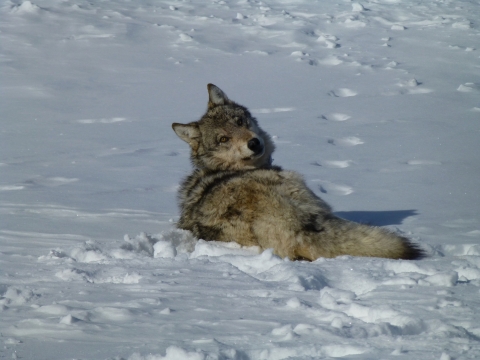Photo By/Credit
Cole, Eric/USFWS
Date Shot/Created
02/15/2013Media Usage Rights/License
Public Domain
Image
As the immobilization drug wears off, a Gray wolf regains more voluntary muscle use. The Gray wolf, being a keystone predator, is an integral component of the ecosystems to which it typically belongs. The wide range of habitats in which wolves can thrive reflects their adaptability as a species, and includes temperate forests, mountains, tundra, taiga, and grasslands. Gray wolves were originally listed as subspecies or as regional populations of subspecies in the contiguous United States and Mexico. In 1978, we reclassifed the gray wolf as an endangered population at the species level (C. lupus) throughout the contiguous United States and Mexico, except for the Minnesota gray wolf population, which was classified as threatened. Gray wolf populations in Idaho and Montana were delisted due to recovery in 2011.
Facility
Species
